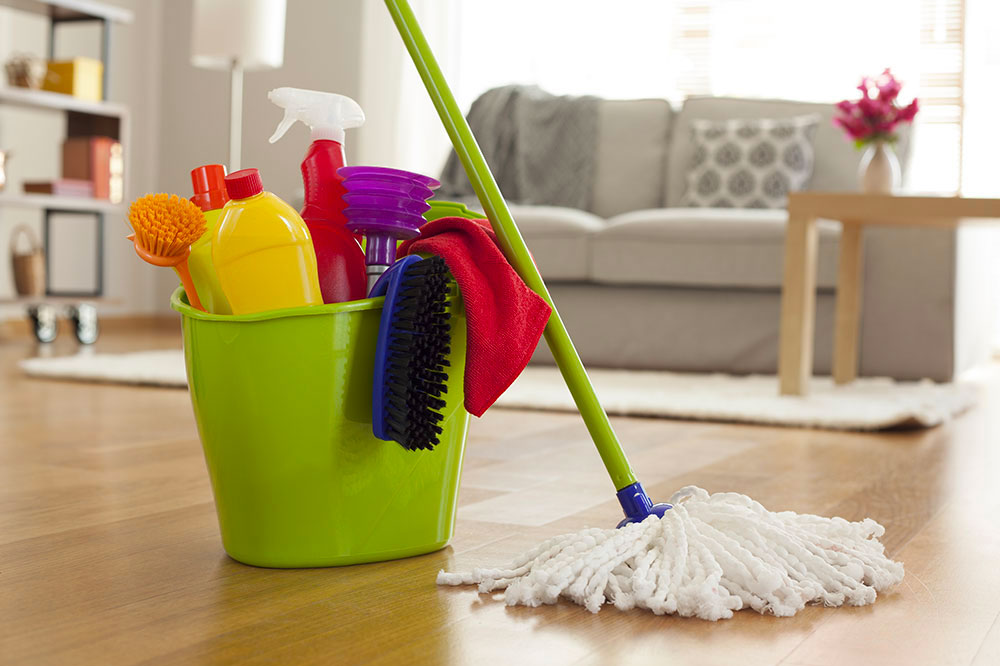Avoid these five common cleaning mistakes for a hygienic home

While everybody loves the idea of a sparkling clean house, hardly anybody enjoys the process of cleaning. After all, it’s exhausting and demands a lot of time and effort. Nevertheless, cleaning your home regularly is necessary. A great way to make it a quick and convenient process is to avoid some common cleaning mistakes. These mistakes may not only waste your time but also make a home dirty and unhygienic.
Starting with the floor
Where do you begin when cleaning your entire home? If your answer is the floor, you probably need to rethink your cleaning strategy. This is one of the most common cleaning mistakes to avoid. That’s because when you clean other areas and objects, such as ceilings, walls, photo frames, tables, and lights, dust and other debris can drop to the floor, requiring you to vacuum or mop the floor two times, otherwise, you may end up with a not-so-clean home even after doing all the hard work. So, always begin from the top of the room and work your way down, cleaning the floor in the end.
Using dirty cleaning supplies
Before you begin, the first thing you must do is check whether your cleaning tools are clean. There’s no point trying to wipe the floor, appliances, or other areas and objects of your house if the rag and vacuum you’re using are soiled and dirty. Using a soiled rag might only spread the grease and grime across a surface and make it more unhygienic than before. So, ensure you wash it well before use. Similarly, wash and sanitize the toilet brush after each use and empty the vacuum as soon as it becomes full, and change or wash its filter every once in a while.
Rubbing stains
It might be tempting to start scrubbing vigorously the moment you encounter accidental spills and splatters, but that will likely be a costly mistake. When you rub the stain, you might spread it across the surface, push it deeper into the material, and even ruin upholstery fibers. The right procedure to remove the stain is simple – blot it with a clean cloth to draw the residue out and finally, use a stain removal method that is ideal for the type of stain and material it is on.
Scrubbing all utensils with the same sponge
People often think the same sponge works for all the utensils. Perhaps it appears so, but you’re likely shortening the life span of some of your utensils. For example, if you scrub a pan with a non-stick coating with an abrasive sponge, you may cause the topmost layer to flake off prematurely, making it useless. Be informed that there are different sponges for different surfaces. Use a regular sponge for non-stick pans and aluminum pots and a metal sponge for cast iron skillets and stainless steel plates.
Spraying polishing solutions directly onto the furniture
Here’s another cleaning mistake you must absolutely avoid if you don’t want to ruin the look of your precious, elegant furniture. When you spray the wood polish directly onto the furniture, one area can get soaked in polish, which can eventually lead to staining. In addition, soaked residue can build up on the wood surface, causing it to warp. A safe alternative is to spray the polish onto a clean cloth and wipe the entire surface for an even application.
Moreover, food odors can make the home stink and one of the best ways to keep the odors away is using Glad® with Clorox™ ForceFlexPlus tall kitchen trash bags. This is an innovative solution to keep bacterial and food odors at bay. The bag comes with a 3-ply drawstring that grips the trash can well and doesn’t let the bag move.
Finally, you can also maintain a clean home with good-quality cleaning supplies. Amway™ is a popular brand that sells a wide range of laundry, dish, and surface pre-wash sprays, dish-washing liquid, and other multi-purpose cleaning products that are safe to use daily. You may choose from a wide range of eco-friendly cleaning supplies from Amway Home™ to maintain a clean and tidy home.



